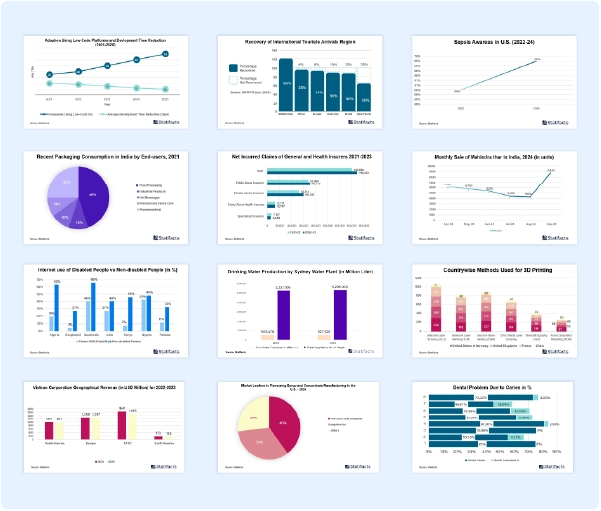

Our customers work more efficiently and benefit from
The global cell culture vessels market size was calculated at USD 4,300 million in 2024 and is predicted to attain around USD 17,700 million by 2034, expanding at a CAGR of 15.2% from 2025 to 2034.
| Industry Worth | Details |
| Market Size in 2025 | USD 4,950 Million |
| Market Size by 2034 | USD 17,700 Million |
| Market Growth Rate from 2025 to 2034 | CAGR of 15.2% |
Introduction cell culture vessels are essential laboratory apparatus that set up controlled environments for cell culture in vitro. Flasks, Petri dishes, bioreactors, multiwall plates, and culture bags are a few of them, which are designed to fulfill specific research and production needs. They are crucial to diverse areas of biological research, drug discovery, regenerative medicine, and cancer research. By supplying aseptic, nutrient conditions, such containers hold suspension and adherent cultures that make them a crucial component in modern life sciences and drug research. Applications of these containers are widening with the growth of biotechnology and the implementation of cell-based therapies.
The cell culture vessels market plays a key role in various sectors, such as biotechnology, pharmaceuticals, academic labs, diagnostics, and tissue engineering. The steady growth is sparked by expanding research and development efforts. The rising need for biologics and the global growth of the biotechnology and pharmaceutical industry. These vessels are essential tools in producing monoclonal antibodies, evolving vaccines, and developing stem cell research. With chronic diseases on the rise and greater investment in precision medicine, both developed and emerging countries are increasing the demand for reliable, high-quality cell culture systems to support innovation and large-scale production. The growing use of biologics and biosimilars is driving the need for efficient, large-scale, cell-based manufacturing. Increasing global funding in regenerative medicine and stem cell research is boosting demand for net gen cell culture vessels that offer better control, scalability, and reproducibility.
“The integration of AI-driven analytics in cell processes has revolutionized our approach, enhancing reproducibility and scalability in bio manufacturing. This advancement is pivotal for meeting the increasing demand for biologics.”
“Advancements in 3D cell culture technologies are opening new avenues in tissue engineering and regenerative medicine. These innovations are crucial for developing more effective and personalized therapies.”
North America
Due to its sophisticated biopharmaceutical infrastructure, substantial research and development expenditures, and high concentration of biotech enterprises, North America led the world market for cell culture vessels in 2024. The area is home to significant public and commercial funding for cell-based research, including precision medicine, vaccine development, and stem cell therapy.
Furthermore, North America’s dominance in the market has been built on the fact that the biggest companies and academic institutions carry out comprehensive clinical trials.
Asia-Pacific
Asia Pacific is expected to grow at the highest speed between 2025-2034, driven by a booming biotech sector with supportive government policies and increased pharmaceutical manufacturing capabilities. China. India and South Korea are heavily investing in biotech research and academia industry partnerships. Regional governments are also actively encouraging cell culture-based research for regenerative medicine, diagnostics, and vaccine production, accelerating the growth in the region at a fast rate.
Japan
Japan is one of the major players in the Asia Pacific market for cell culture vessels. The country is unique in the region based on its robust infrastructure in tissue engineering and regenerative medicine, as well as leadership in microfluidics and automation technology. Japan is a key hub for advanced biomanufacturing and research and development of cell culture applications due to its regulatory environment that also facilitates clinical trials and innovations in stem cell-based therapeutics, particularly through the Sakigake fast-track system.
The market cell culture vessels are fairly fragmented, with different key players competing regionally and internationally. The existence of a mix of mature firms and new biotech firms triggers continuous innovation, especially in vessel scalability, automation, and bioprocess efficiency.
This company operates in over 50 countries. Thermo Fisher provides a broad product line in life sciences, including cell culture vessels, regents, and automation tools. It recently expanded its cell therapy manufacturing capabilities and is actively developing smart bioproduction systems.
With the proper expertise, this company provides high-end glass, ceramics, and life sciences products. Corning’s vessels, such as HYPERFlasks and CellSTACKs, are extensively applied in bioproduction. Corning is a global company that has invested in scalable and automation-friendly formats.
Published by Deepa Pandey
For any questions about this dataset or to discuss customization options, please write to us at sales@statifacts.com
| Stats ID: | 8196 |
| Format: | Databook |
| Published: | April 2025 |
| Delivery: | Immediate |
| Price | US$ 1550 |

| Stats ID: | 8196 |
| Format: | Databook |
| Published: | April 2025 |
| Delivery: | Immediate |
| Price | US$ 1550 |

You will receive an email from our Business Development Manager. Please be sure to check your SPAM/JUNK folder too.

Unlock unlimited access to all exclusive market research reports, empowering your business.
Get industry insights at the most affordable plan
Stay ahead of the competition with comprehensive, actionable intelligence at your fingertips!
Learn More Download
Download